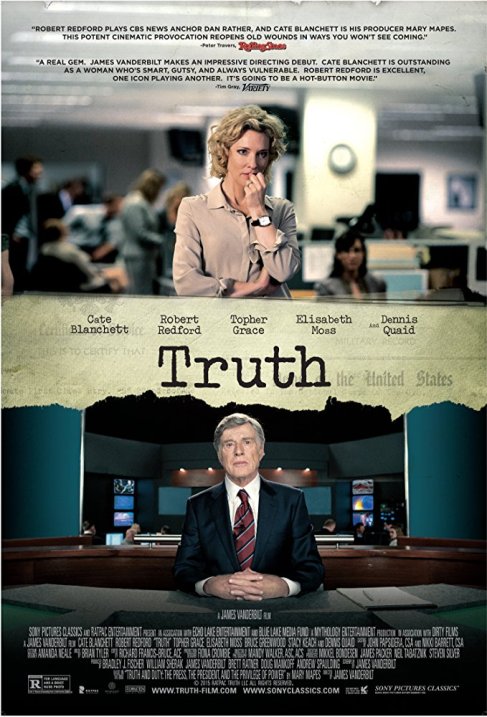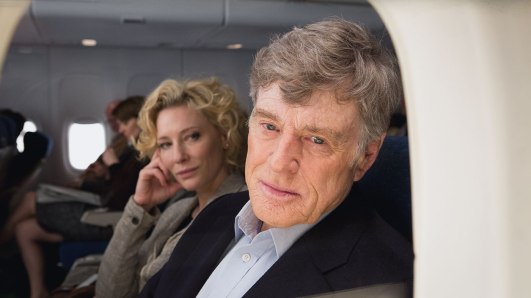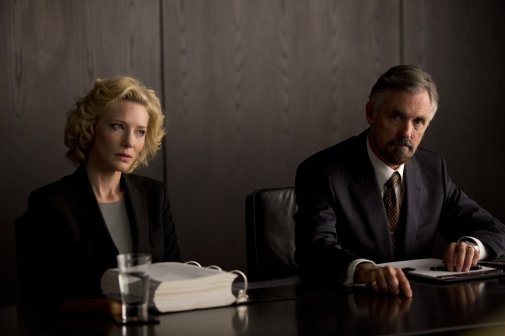In a society where the media is constantly criticized, Truth, a drama and adaptation of true-story Truth and Duty: The Press, the President, and the Privilege of Power, that depicts Mary Mapes, played by Cate Blanchett, and Dan Rather, played by Robert Redford, searching for answers for CBS’ 60 Minutes to learn more about Bush’s military service, is likely to ruffle a few feathers. As Mapes dives deeper into her quest for truth, she, too, is confronted with criticism, and people begin to question whether her research is solidly supported by fact. The story question stayed the same throughout the film: “What is truth?”. The intense film falls into the “drama” category of genre; foul language earned this film an “R” rating, but would be appropriate for adults, and teens, with discretion.

Part of what made the movie so compelling was it was rooted in the story. The story was interesting enough to drive the film because the events happened only a few years ago. Even though the story alone could carry the film, the characters had depth when the screenwriters chose to let the audience see the characters’ conflicts inside and outside of the newsroom.
*spoiler alerts*
There was character-vs-character conflict as Mapes and Rather fought for people they knew to believe them; there was character-vs-society conflict when society turned against them and saw them as shoddy media; there was even character-vs-self when Mapes had her coping mechanism taken away from her when she could no longer use her career as a way to deal with her upbringing in an abusive home; Rather faced internal struggles as well when he was forced to find a way to balance the face he put on for the media and his personal relationships.
*end spoiler alerts*
Since the audience got to see a glimpse into the real lives of Mapes and Rather, the resolution of the story mattered more. The characters were relatable.
The acting was convincing, particularly from the main characters, and all of the characters were made to look the part of the real-life people they were playing through, hair, makeup, and clothes. The newsroom shots looked like what you would expect if you walked into CBS. Truly, all of the sets looked great. The cinematography wasn’t particularly special, but was well-done.
I generally wasn’t struck by the shots in the film; however, I was impressed by one medium shot when Rather is looking out of the airplane window and Mapes is watching him. Although there weren’t words being spoken, the emotion that Rather felt and the depth of Mapes caring for him was captured extremely well in that shot.
The film was not without its faults, however. For example, in one scene, when the team is searching for people to corroborate evidence, they put the abbreviation for lieutenant colonel up on their whiteboard– and they abbreviated it in a very obscure way. Considering the movie also notes that Mapes worked Abu Ghraib and a military person was working alongside her, the abbreviation didn’t make sense.
*Spoiler alert*
In another scene, a person questioning Mapes argued that the abbreviation “OETR,” found in her papers showed a huge flaw in Mapes work because it was never used. In reality, while “OETR” was brought into question, the person who brought it up to Mapes argued that “OETR” would not be on any paper prior to 2004 because it didn’t exist yet.
*End spoiler alert*

Both of these faults are nitpicky, admittedly, but they did not go unnoticed and bothered me.
All-in-all, Truth was a well-done, well-researched movie. While it was a fair depiction of events that occurred back in 2004, it is relevant today in that the well-intentioned pursuit of truth in the media, and society’s reactions to the media’s efforts are examined critically– and if we can learn anything from Truth, maybe those efforts ought to be.
9/28/17
Jenna Shackelford
